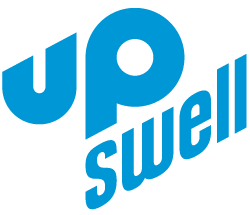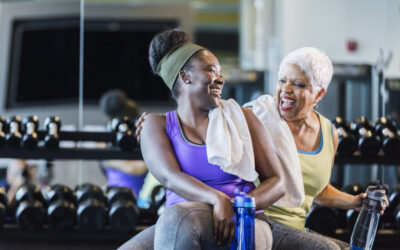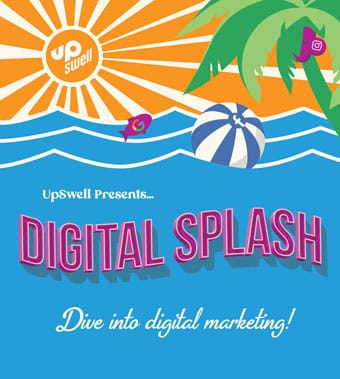When done properly, incorporating Facebook and Instagram ads into your marketing playbook is a great way to effectively market to prospects in your area.
However, it’s important to note that Facebook and Instagram are continually evolving and making changes to their platforms almost every week. It’s a full-time job to keep up with all of these changes and understand how they should shape your strategy.
Unfortunately, the majority of gym and fitness club owners and general managers continue to underutilize the power of Facebook and Instagram ads. There are typically two recurring reasons for this:
1. The owner or GM doesn’t have the time to properly keep up with everything.
This is completely understandable — they get preoccupied with running everything else within the business, and marketing and social media fall by the wayside. Maybe they occasionally do a quick promoted post on a whim with no real strategy in mind, and then wonder why the results are not as great as they expected.
2. They assign this task to someone internally.
To save money and try to get more value from an existing employee, social media is assigned to someone who’s perceived as social media savvy. This is usually someone in their 20’s who was initially hired for sales, not social.
The thinking is that because that person is young and spends a lot of time posting on their personal social media pages, they must know how to effectively utilize ads. The reality is that posting to personal pages and knowing the ins and outs of B2C marketing are two completely different skill sets, and going this route almost always leads to underutilizing the power of social media ads.
Like we said before, social is a constantly changing landscape, and there are a lot of different options out there for ads.
Here’s a brief synopsis of the types of ads that can be used, how to use targeting, the most effective devices and platforms, cost, image/video tips, and the analytics behind them.
Types of ads
Whether you’re seeking to raise brand awareness, boost likes or follows for your club’s page, collect lead information, drive people to your website, and/or have people engage on a post, there is an ad to meet your needs. Fortunately, when setting up ads, Facebook makes each ad type clear to help you choose an objective:
- Brand Awareness Ads and Page Likes Ads are self-explanatory — the ads help you achieve just that.
- Engagement Ads are great to use if you want to boost a post or event that has already been created on your gym’s Facebook page.
- If you want to drive people to your website, you’d use a Website Clicks Ad. This allows for a URL to be embedded in the ad so when someone clicks on the ad, it takes them to the URL that was set up. A lot of times, this ad is used to drive people to a landing page, online signup page, or to obtain a guest pass on a club’s website. This is the only ad type that Facebook promotes on the Audience Network (refer to Devices/Platforms section below).
- Lead Form Ads allow potential clients to see a form that is already filled with info they have shared with Facebook, like their name, number, or email. This is a great ad to use to painlessly capture lead information and follow up with them. We recommend integrating this with a tool that automatically emails you when someone fills out a form (vs. the manual way of periodically pulling/fetching Facebook data).
All of these ad types (aside from page likes and event responses, which are Facebook-specific) can be shown on both Facebook and Instagram, which allows for people to see ads multiple times.
Audience/targeting for fitness marketing
Facebook remains one of the most-used social media sites, with 2.6 billion monthly active users. Additionally, 74% of American adults are daily active users.
Facebook ad targeting is not too complex on a high level, but there are a ton of selections that can be incorporated to deliver extremely relevant and effective ads.
When selecting an audience to target, it’s important to not get too broad — or too specific. Facebook has a ton of filters, but the best place to start is age and radius. After that, there are many other factors to choose from, such as household income, interests, gender, net worth, and more.
It’s good to use these filters to increase targeting, but it’s also important not to tighten them too much. Otherwise, you will target yourself right out of an audience. Balance comes from starting with a few filters, analyzing your ad performance, and then making adjustments to find the sweet spot.
[Related: Learn more about ad targeting strategies for gyms.]
Devices/platforms
Over 90% of Facebook users in the U.S. are now using it via mobile. For this reason, it’s smart to go where the eyes are and select mobile as the device. We usually see better stats from targeting only mobile devices (excluding impressions on other devices) but suggest you experiment and analyze that on your own.
Depending on the type of ad you choose, there are different ways for it to be delivered. For example, if you choose to create a Lead Form Ad, this can be shown on people’s Facebook feeds and Instagram feeds. If you decide to use a Website Clicks Ad, this can be shown on people’s Facebook feeds, Instant Articles, Instagram feeds and stories, and on the Audience Network.
The Audience Network is one of the best platforms, because it allows you to show ads outside of Facebook via apps in three creative formats: banner, interstitial, and native.
For example, if a viewer is in the Uber app, they might see a banner ad across the bottom, or if a viewer is in the Shazam app, they might see a native ad shaped like a square to fit the look and feel of that app.
Cost of Facebook and Instagram ads
Facebook and Instagram marketing is still cost-effective, and there’s an ad type to meet anyone’s budget. For most clubs, $250-$500 per month on ads is a good place to start.
It’s important to note that while there is still good value in properly structured Facebook and Instagram ads, the value is decreasing month-by-month. We have been doing Facebook ads for our clients for over six years and have seen the cost rise dramatically in that period. It’s a marketplace, so the more businesses there are competing for ad space, the more each impression/click/conversion will cost.
We believe that as the television industry continues to get disrupted by Netflix, Hulu, etc. and people cut cable, there is going to be a massive shift in marketing budgets from television to social. This shift, combined with the increasing number of small businesses utilizing Facebook ads, makes it very apparent that the cost of social ads will dramatically rise (and the value decline) as time progresses. We believe there is still a window of 18-36 months where great value can be found, before the cost gets too high to see great ROI.
Images/videos
Images and videos are responsible for 75-95% of an ad’s performance on Facebook. Therefore, the images you use are crucial to the success of the ads.
Facebook dictates that you can’t have more than 20% text on your images — they don’t want people’s newsfeeds to be filled with text-heavy images screaming for attention. Fortunately, Facebook has a text overlay tool that will test the image and let you know if the image is okay to run.
Also, since so many Facebook users watch video without the sound on, captioned video ads can increase video view time by an average of 12%, so make sure your video can be viewed without sound and still make an impact.
Analytics
Analytics are crucial in order to monitor what’s working and what isn’t. Facebook’s built-in analytics offer a ton of insight — so much, in fact, that it can be overwhelming to many who don’t know which ones to focus on or what the benchmarks are.
It’s extremely beneficial that ads can be updated on the fly at any time. For example, if you see that females are responding better to a particular ad, the targeting can be adjusted to target females only.
It’s imperative to look at the analytics and make the necessary adjustments to achieve the best results — there is no such thing as “set it and forget it” when it comes to effective social media advertising.
Conclusion
A diversified marketing playbook is always your best bet, and we never recommend putting all your eggs in one basket. Facebook and Instagram ads should be in the mix (along with SEO and PPC and direct mail). When properly designed, targeted, executed, and analyzed, they present a ton of opportunity for your business.
However, there are a lot of complexities within this continuously moving landscape. It’s important to take a proactive approach to your health club marketing strategy, rather than putting someone who only knows the basics in charge.
To avoid missing out on the peak value of social media, it’s important to evaluate and properly align your social strategy as soon as possible. A fitness marketing agency can help you determine the best combination of strategies for your club and get the best results.






